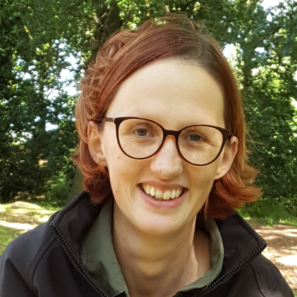Aiming High: thinking skills in the outdoors
The endless variety that we find in nature provides the perfect opportunity for open ended critical thinking for all ages. Its not just mud kitchens and rope swings!

1. Odd One Out
Equipment – none
A great quick activity that extends thinking for any age group. Send your children out to find something in the forest that interests them. It might be something that they can pick up and bring back or just something that they can then talk about when they come back to the gathering circle. Put them into groups of four to six and ask them to describe what they’ve found to the rest of their group. Once they’ve all taken a turn can they decide which of their things is the odd one out and why? If this wouldn’t work well for your children individually, send them out in groups. Perfect for developing negotiation and discussion skills when a group have to decide on one thing!
2. Visual Mapping
Equipment – large sheet or tarpaulin, ropes / hoops
Scavenger hunts are a classic activity in outdoor learning and they’re great if you’re wanting to check their ID skills or their ability to read a list but giving them an open ended task to “bring back ten different things that tell you about this forest” can be much more interesting.
Before sending children out, I don’t specify what they should find but I do clarify things that I don’t want brought back: nothing you’ve picked, no poo, no live animals and nothing that is bigger than you. When they’ve brought their items back they should place them on the sheet for everyone to see.
Once everyone has looked at the items can they sort them into groups? What do these things have in common? Do any of the groups overlap? They might want to use sticks to create mindmap style links or ropes or hoops can be used to create a Venn diagram. When they’ve put things in common groups can they decide on a name for their categories? You might wish to label the categories with pieces of paper or chalks straight onto your sheet.
The discussions that we’ve had out of these activities have been amazing, by giving the children the freedom to choose what they bring back, you’re allowing them to construct their own understanding of the forest. You can see the depth of their understanding, challenge their misconceptions and frequently by amazed by just what they do already know.
3. Forest Philosophy
There is something about sitting on the grass under the trees that makes a forest or wooded area the perfect space for some philosophical thinking.
This activity needs a stimulus object, picture or piece of text. You can bring something with you if you want to steer the conversation in a particular direction or allow the group to bring their own objects into the circle to discuss.
Begin by allowing the children to say what they want to say about their items. You might want to go around the group in turn or to allow them to speak when they feel comfortable to do so. A speaking stick or similar object can be useful here, allowing the speaker freedom to express themselves without fear of interruption should they hesitate or pause for breath.
With a little facilitation the conversation will often steer instelf naturally towards philosophical questions or you might want to encourage the group to consider these specifically if the first section of conversation reaches a natural end. Ask them to think about the conversation that they’ve just been having and to come up with some questions to discuss that don’t have answers.
The results here can be astounding, frequently going into the nature of being and what constitutes life. On my most memorable occassion, a group had chosen a dandelion seed head to discuss and were reflecting on the question of whether seeds were dead, alive or immortal when a slight gust of wind blew the seed head onto the lake next to us only for a large carp to jump up, eat it and vanish back into the lake!

Becky Wilkinson
Becky is the lead practitioner for Teaching Trees, delivering outdoor learning for schools across Staffordshire and Derbyshire as well as Practitioner Training across the Midlands and North of England.
We deliver Outdoor Learning Training for Practitioners at Level 2 and Level 3 as part of the Cambium Network as well as bespoke packages for individual settings.

